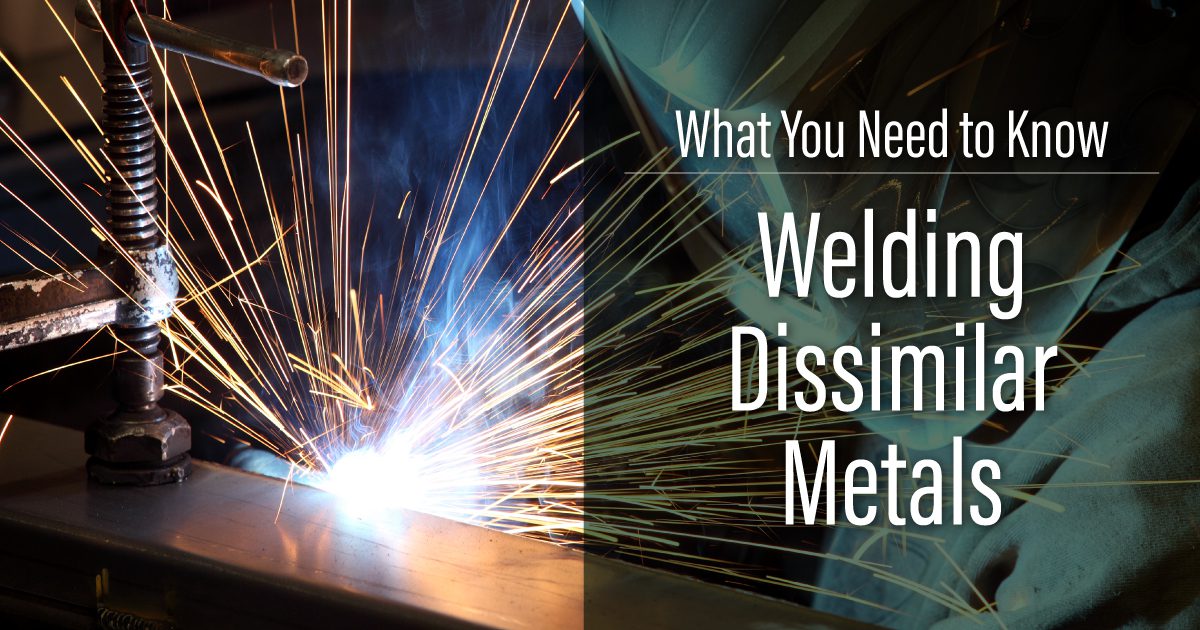Welding Dissimilar Metals – What You Need to Know

In your metal construction or metal fabrication projects, the welding of different kinds of metal is often inevitable. Joining metals of differing strengths can lower the project cost, as well as allow greater flexibility in meeting your clients’ goals. As a business owner, it’s important for you to ensure that your welders are mindful of the various considerations that must be taken when working with different metal varieties. A project is only as strong as its weakest connection, and you don’t want your welded areas to compromise the integrity of your industrial metal construct.
When working with and welding dissimilar metal types, here are a few things you should keep in mind:
Be informed up front
Before starting any welding task, make sure you know the type, melting points and preheat temperatures, and strength of your metals. You should also take stock of the strength of the welding fillers you have available. It’s also important to note the environmental factors the final project will be subjected to.
Choose your filler wisely
Generally speaking, it’s wise to match the strength of the filler to the lower strength metal. This can help prevent cracking or other integrity damage during the life of the structure. It’s also wise to consider the joint design and thickness of the materials to be welded, and choose your filler accordingly.
Determine the type of welding needed
While fusion welding is often an appropriate choice in many scenarios, take care to appropriately adjust the temperature to avoid damage to the metal with a lower preheat requirement. Fusion welding could be your best choice given it doesn’t require external pressure, the relative ease of the process, and that edge preparation isn’t necessary. Fusion welding may not be the best choice when welding materials with greatly varying melting points, and when the intense heat required would compromise the end product.
- Low-dilution welding is an option when you need to join two materials without using filler. Low-dilution welding usually results in a smaller amount of melted area, and is achieved through laser, pulsed arc, and electronic beam methods. Low-dilution welding is beneficial when you’re concerned about great durability and strength, which is achieved because the metals’ inherent qualities are retained.
- Non-fusion joining doesn’t involve the melting of materials, and includes alternative methods such as soldering, explosion welding, friction welding, and diffusion bonding. This may be your best choice for some projects due to it generates a smaller heat-affected zone and generally maintains material integrity.
Know your limits
Despite the various welding options available, some metal pairs remain the most difficult to join. Some examples of metal incompatibility include: Aluminum and carbon steel, aluminum and copper, copper and steel, and aluminum and stainless steel.
If it is necessary for these metal combinations to be joined in a project, one option is to use a transition metal between the two incompatible metals. This can be achieved by “buttering” or surfacing the metal with a more compatible metal, or by using a composite insert in between the metal pieces.
While it is generally possible to weld dissimilar metals as needed for your construction or fabrication projects in Phoenix, you’ll achieve greater success if you keep in mind a few key considerations.
If you have questions about the complicated world of welding, or anything else related to metal fabrication in Arizona, our team of metal experts is here to help. With our vast experience and passion for helping customers, you’ll feel empowered to make the best choices in metal for your industrial metal jobs in Phoenix.



